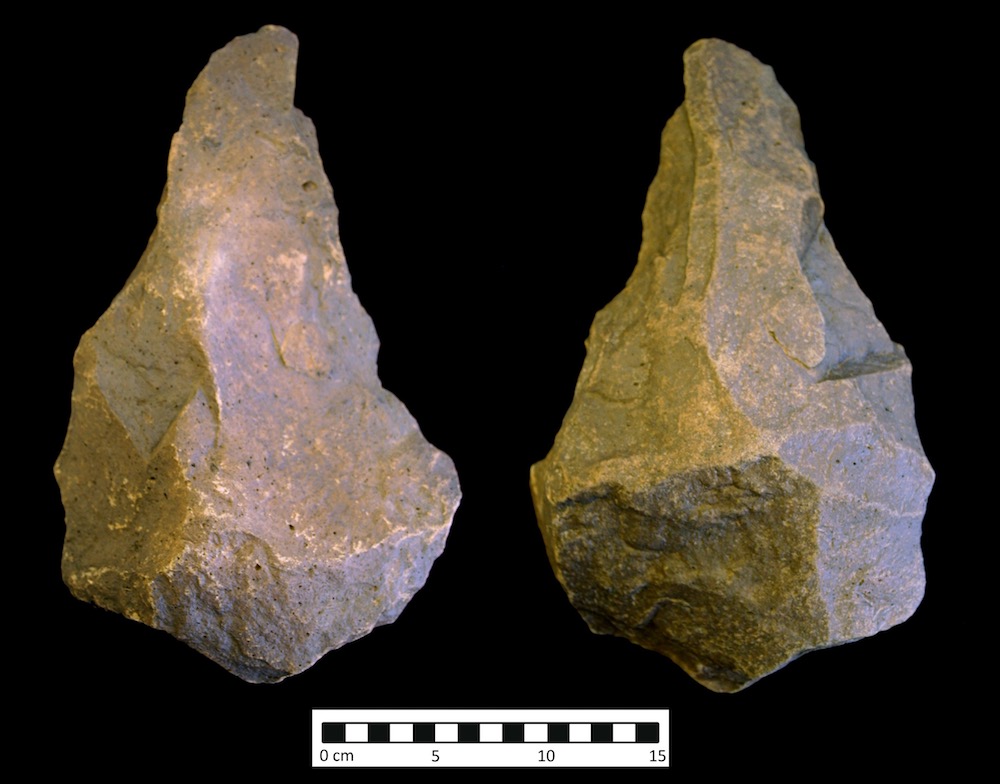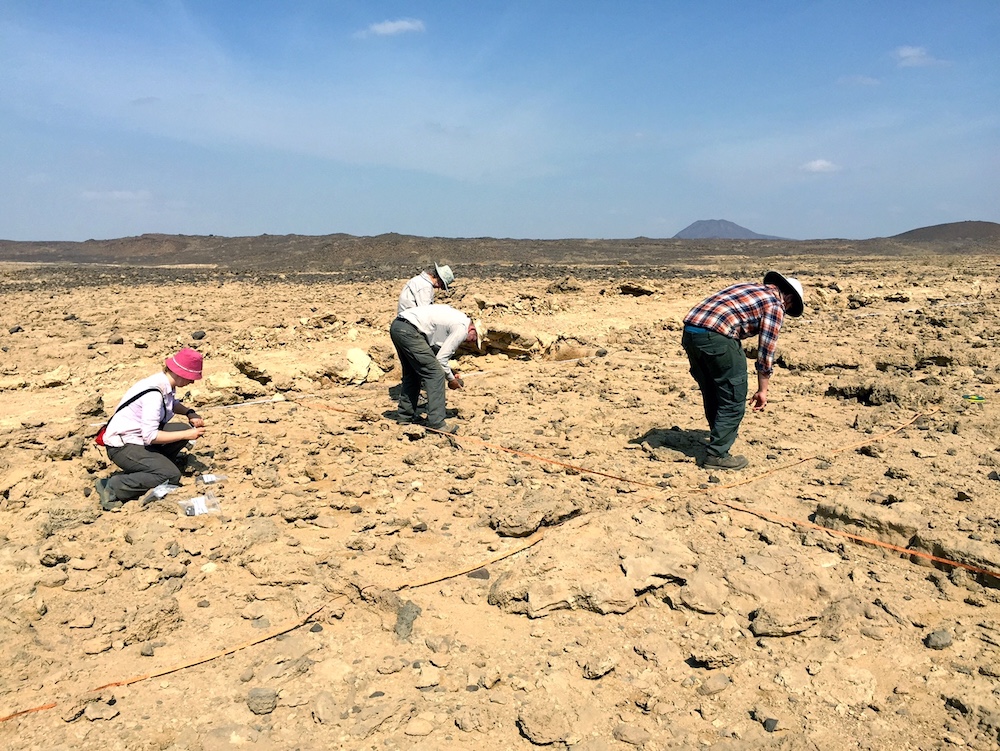Ancient Axes, Spear Points May Reveal When Early Humans Left Africa

More than 1,000 stone artifacts, some of which may be up to 1.76 million years old, have been discovered at Wadi Dabsa, in southwest Saudi Arabia near the Red Sea.
The artifacts, which were found in what is now an arid landscape, date to a time when the climate was wetter; they may provide clues as to how and when different hominins left Africa, researchers said.
The stone artifacts include the remains of hand axes, cleavers (a type of knife), scrapers (used to scrape the flesh off of animal hides), projectile points (that would have been attached to the ends of spears), piercers (stone tools that can cut small holes through hide or flesh) and hammer stones. One of the hand axes is unusually heavy, weighing just under 8 lbs. (3.6 kilograms), the researchers said. The discoveries were detailed in the December 2017 issue of the journal Antiquity. [The 25 Most Mysterious Archaeological Finds on Earth]
Based on the tool design, archaeologists said they can tell that many of the artifacts are "Acheulian," a term used to describe types of stone tools made between 1.76 million years and 100,000 years ago. When exactly within this time frame the various artifacts at Wadi Dabsa were made is uncertain, the archaeologists said.
"We hope to try and date the tufa [a type of limestone] and basalt flows within the site, which are associated [with] the large [stone artifact] assemblage recovered from within the wadi," said study lead author Frederick Foulds, an archaeology professor at Durham University in England. Once the team has more-precise dates for the artifacts, the scientists may be able to determine what type of hominins made the tools, Foulds said.
A wetter time
Archaeologists said they can already tell that the artifacts date to a time when the climate was wetter. "It's far more arid [today] than it was at certain points in time," Foulds told Live Science. "It's strange to be walking over hard, dry rocks which were formed by water pooling during a far wetter period. We think it was during these wetter periods that it's likely the site was occupied."
Sign up for the Live Science daily newsletter now
Get the world’s most fascinating discoveries delivered straight to your inbox.

The climate of the entire Arabian Peninsula has changed multiple times in response to the massive changes in global climates that accompanied glacial cycles over the last 2.5 million years, Foulds said.
"During periods when the ice sheets were at their largest, there was widespread aridity in the Sahara and Arabian deserts, but during periods when the ice sheets shrank, the climate of these regions became a lot wetter," Foulds said.
One of the big questions is how the changes in climate affected the dispersal of hominins from out of Africa, Foulds said.
"What's interesting about the Wadi Dabsa region is that the geography of the region may have created a refuge from these changes," Foulds said.
Because of Wadi Dabsa's topography the region may have received rainfall when other parts of Saudi Arabia were arid. Hominins were able "to continue living there [at Wadi Dabsa] when they couldn't live in other areas," Foulds said. Researchers have found that Wadi Dabsa’s topography includes a basin which may have had streams of water flowing down its slopes, the water possibly pooling in the basin.
The team is carrying out its research as part of the DISPERSE project, which is analyzing landscape and archaeological changes in Africa and Asia in order to better understand how humans evolved and dispersed out of Africa.
Originally published on Live Science.

Owen Jarus is a regular contributor to Live Science who writes about archaeology and humans' past. He has also written for The Independent (UK), The Canadian Press (CP) and The Associated Press (AP), among others. Owen has a bachelor of arts degree from the University of Toronto and a journalism degree from Ryerson University.









